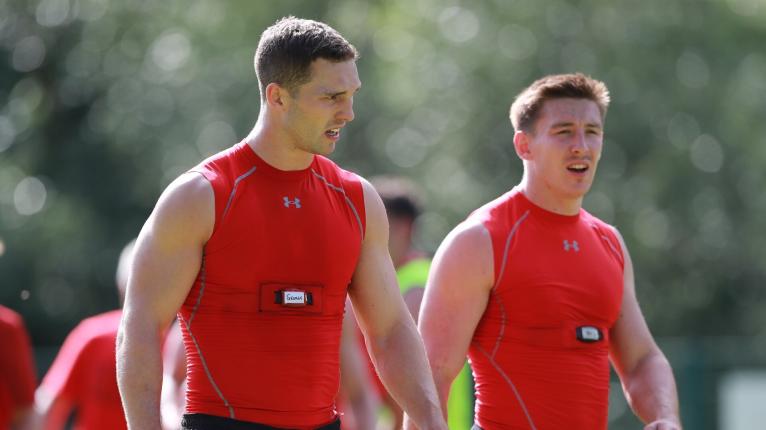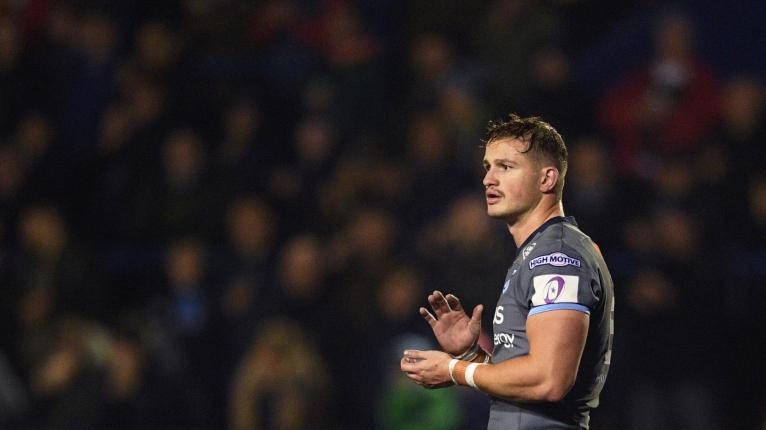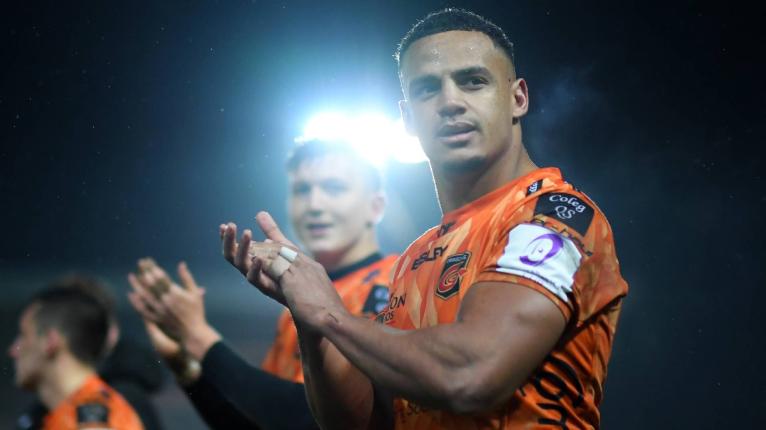Frontrunners, likely-lads and bolters: The 12 players vying for Wales' back three

It was British Prime Minister Harold Macmillan who uttered the words, ‘they’ve never had it so good’, when referring to the prosperity of his electorate in 1957 but fast-forward 63 years and you could easily attribute those words to Wayne Pivac’s appraisal of his overflowing back-three options to Wales fans.
When Pivac and Stephen Jones burn the metaphorical midnight oil on Tuesday night, ahead of the Six Nations squad announcement, beads of sweat will be forming as they sign off a squad they feel able to defend their Six Nations trophy.
We don’t know what size squad Pivac will name, but as a guide, Warren Gatland picked a 39-man squad in 2016, 2018 and 2019, with seven back-three players, while in 2017 Rob Howley picked six in a 36-man squad. RugbyPass will stick with the former as it assesses the plethora of options…
The front runners; Liam Williams, Leigh Halfpenny, George North, Josh Adams
The first name pencilled in will be Josh Adams. From being rejected by the Scarlets and seeking to establish himself at Worcester Warriors, Adams, 24, has become one of the world’s premier wings and scored more tries (10) than any other international Test wing in 2019. His form has not dropped off since his return from Japan and four tries in three appearances for the Cardiff Blues point to a player at the peak of his powers.
Adams has been named as a No 13 for the game against Leicester so there is a chance he will be picked there, that’s if George North, Wales’ other first-choice wing doesn’t slip inside. Both players have been selected by their regions at outside-centre this weekend, with North facing the underrated Alex Lozowski, as the crisis-hit Ospreys face Saracens.

North didn’t have the impact he would have liked in the World Cup, but as the top try scorer in Test rugby currently still playing, the 27-year-old has the ability and experience to wrestle challengers to his No 14 shirt. Whether he can withstand the first real pressure to his place since 2010 will be one of the more intriguing subplots of the tournament. Acting as the last line of defence, certainly against Italy, will be 89-cap Leigh Halfpenny.
There were murmurs the Welsh mainstay may make way for the younger generation after Japan, but the 31-year-old has showed renewed vim and vigour for the Scarlets in the last month and warrants a place on form, not just reputation. Solid under the high-ball, a keen reader of the backfield and a testy defender, it’s his offensive game has been revitalised under Brad Mooar.
The final name of the first-choice quartet is Liam Williams. Returning to the Scarlets sooner than later, the world-class Williams hasn’t played picking up an ankle injury in training before the World Cup semi-final against South Africa but his coach, Mark McCall has said he’s nearly fit but lacking game-time. An entry possibly in Round 3, after some minutes with either Saracens, or the Scarlets, has been suggested. Either way, it would raise eyebrows if he didn’t play a part in the tournament.
Likely squad members; Hallam Amos, Louis Rees-Zammit, Johnny McNicholl
If Wales’ front line players don’t surprise you, the next tranche of players is where the conversation gets interesting. Hallam Amos has put mixed performances at the World Cup behind him and has been showing up well for the Cardiff Blues.

He tops the Pro14 for offloads, setting up a classy Owen Lane try with a neat flick of the wrist against the Scarlets and has the versatility to play at 11, 14 and 15. At 25, the trainee doctor has been waiting for his breakthrough year for what seems like an eternity and he knows now is the time to prosper. Another player with the ability to play across the backfield is Johnny McNicholl.
Making his debut against the Barbarians, the New Zealander drew widespread plaudits. He showed an eye for the try-line, the confidence to attack from deep and game intelligence to dovetail seamlessly with his colleagues. Talk of McNicholl’s potential is wide of the mark.
He’s piping hot and oven-ready for Test rugby. It’s the seventh and final member of the squad that will garner the most headlines. Louis Rees-Zammit will only turn 19 the day before the Italy game yet the 6ft 3in wing is heavily backed for inclusion.
He’s the Premiership’s second top try-scorer after Ben Earl; he is playing with enterprise and confidence and to not select him would be like keeping a gleaming red Ferrari in the garage when you’re desperate to give it a spin – ‘why wait?’ a salivating Welsh fanbase may say. Rees-Zammit’s point of difference is his pace and you’d wager he’d probably be the fastest squad member, on a par the tournament’s most fleet-footed wings; Jonny May, Anthony Watson and Teddy Thomas. Is the Cardiff-born wing among Wales’ top seven back three players at present? On the evidence, there is nothing to suggest otherwise. A future star in the making.
Snapping at heels; Steff Evans, Owen Lane, Ashton Hewitt, Ryan Conbeer, Rio Dyer
With such intense competition for the back three shirts, it’s no surprise there will be some big names facing disappointment.
The two players to stand out are Steff Evans and Owen Lane. Evans has enjoyed something of a renaissance this season. His ability to beat a man from a standing start, alongside Matthew Morgan, is the best in Wales since a certain Shane Williams hung up his size 7s. Indeed Evans has beaten more defenders than any other player in the Pro14 and shares the top spot with Ryan Conbeer for clean breaks. He’s been sensational and in any other year, would consider himself a shoo-in for the Wales squad.

Owen Lane, could make the Wales squad by proxy. Alongside North and Adams, Lane, who played at No 13 throughout his age-grade career, could be deployed in the 13 shirt but if not, the explosive Cardiff Blue is a hamstring tear away from the squad. A consummate finisher, with 16 stones of heft to break tackles, Lane, who turned 22 last month, has time on his side, and with 23 tries in 47 appearances, his potency is unquestionable. Deserving of consideration is Conbeer. The Wales U20 wing, is enjoying a breakthrough season at the Scarlets, and his squat frame, pace and quick feet have been troubling defenders throughout the Pro14 season. At just 20 he, like Lane, is one for the future. One player who was called up for the Wales squad against the Barbarians and merits a mention is Ashton Hewitt, a gifted broken-field runner, who has endured a torrid time with injury, but when fit has shown the ability to split defences and leave defenders bamboozled. Hewitt, like young Sevens star Rio Dyer, needs to a run of games in an improving Dragons team. The opportunities will come.






























































